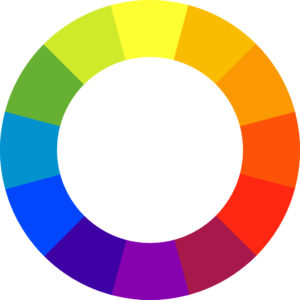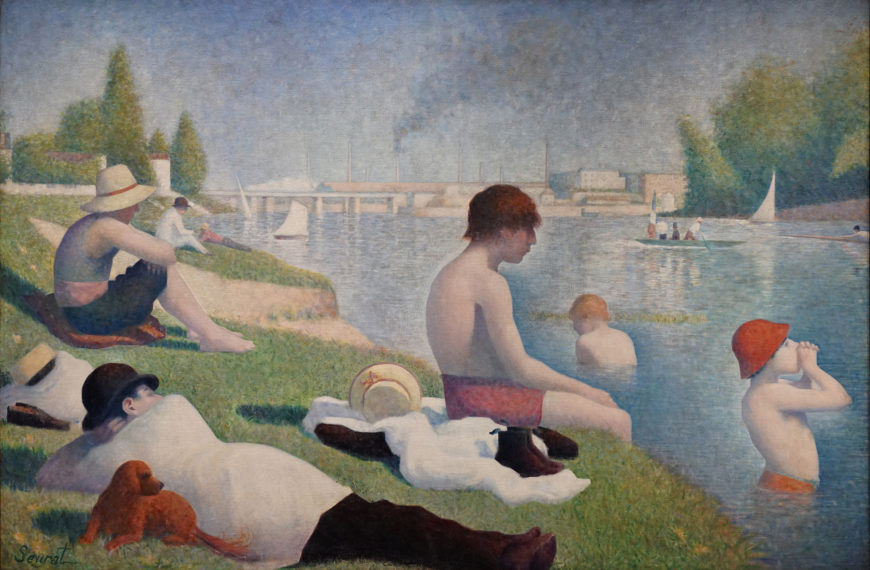21 Chapter 10 – Post-Impressionism
Post-Impressionism
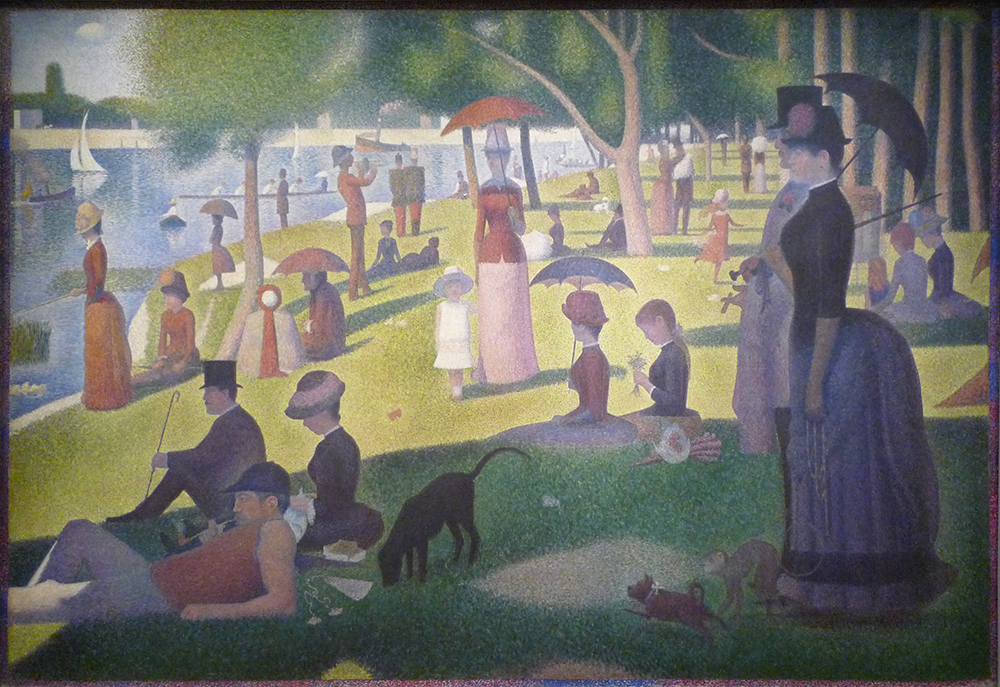
Audio recording of the chapter (part 1) is here:
Just a dozen years after the debut of Impressionism, the art critic Félix Fénéon christened Georges Seurat as the leader of a new group of “Neo-Impressionists.” He did not mean to suggest the revival of a defunct style — Impressionism was still going strong in the mid-1880s — but rather a significant modification of Impressionist techniques that demanded a new label.
Fénéon identified greater scientific rigor as the key difference between Neo-Impressionism and its predecessor. Where the Impressionists were “arbitrary” in their techniques, the Neo-Impressionists had developed a “conscious and scientific” method through a careful study of contemporary color theorists such as Michel Chevreul and Ogden Rood.[1]
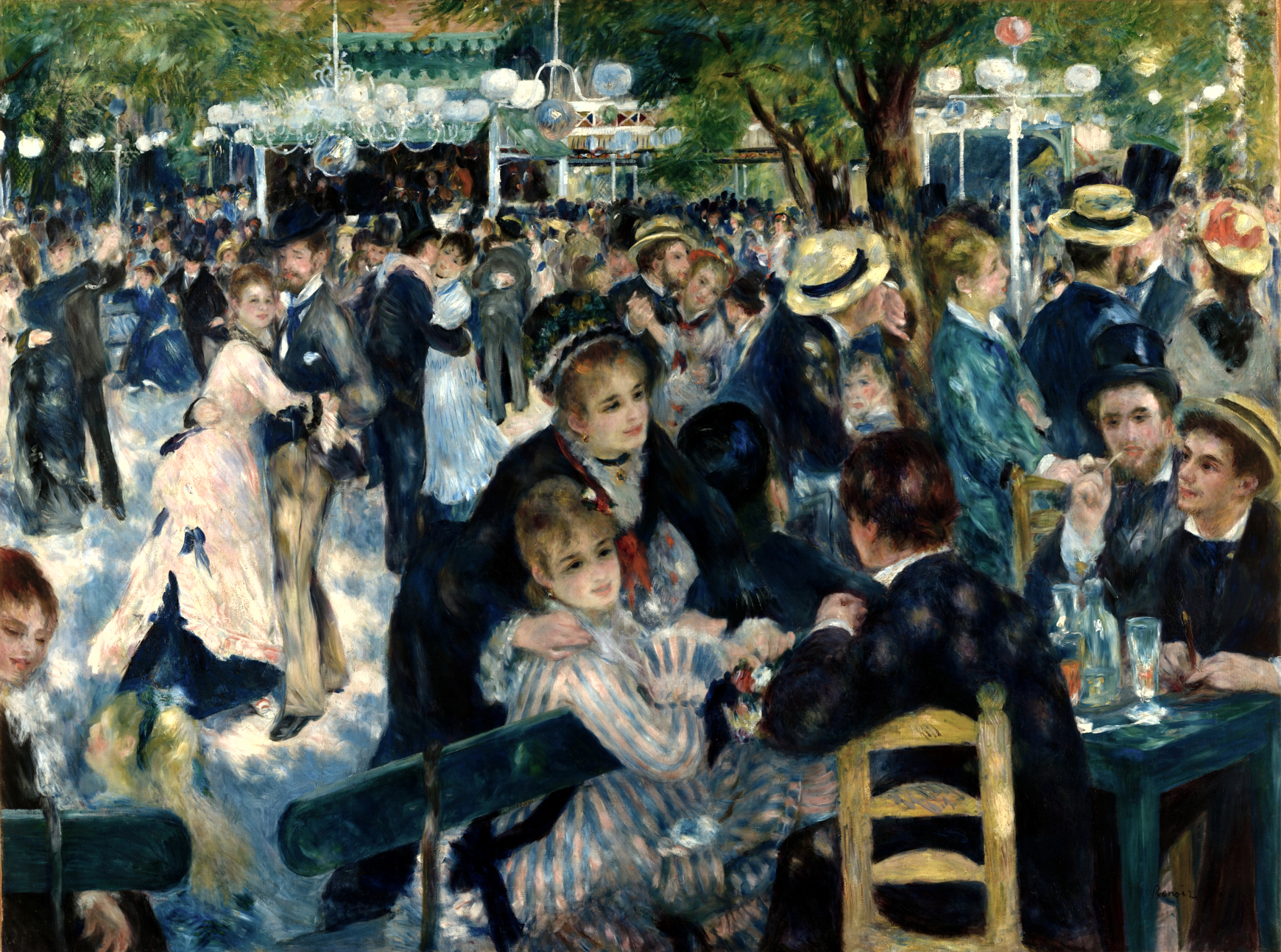
This greater scientific rigor is immediately visible if we compare Seurat’s Neo-Impressionist Grande Jatte with Renoir’s Impressionist Moulin de la Galette. The subject matter is similar: an outdoor scene of people at leisure, lounging in a park by a river or dancing and drinking on a café terrace. The overall goal is similar as well. Both artists are trying to capture the effect of dappled light on a sunny afternoon. However, Renoir’s scene appears to have been composed and painted spontaneously, with the figures captured in mid-gesture. Renoir’s loose, painterly technique reinforces this effect, giving the impression that the scene was painted quickly, before the light changed.
By contrast, the figures in La Grande Jatte are preternaturally still, and the brushwork has also been systematized into a painstaking mosaic of tiny dots and dashes, unlike Renoir’s haphazard strokes and smears. Neo-Impressionist painters employed rules and a method, unlike the Impressionists, who tended to rely on “instinct and the inspiration of the moment.”[2]
Pointillism and optical mixture
One of these rules was to use only the “pure” colors of the spectrum: violet, blue, green, yellow, orange, and red. These colors could be mixed only with white or with a color adjacent on the color wheel (called “analogous colors”), for example to make lighter, yellower greens or darker, redder violets. Above all, the Neo-Impressionists would not mix colors opposite on the color wheel (“complementary colors”), because doing so results in muddy browns and dull grays.
More subtle color variations were produced by “optical mixture” rather than mixing paint on the palette. For example, examine the grass in the sun. Seurat intersperses the overall field of yellow greens with flecks of warm cream, olive greens, and yellow ochre (actually discolored chrome yellow). Viewed from a distance these flecks blend together to help lighten and warm the green, as we would expect when grass is struck by the yellow-orange light of the afternoon sun. It was this technique of painting in tiny dots (“points” in French) that gave Neo-Impressionism the popular nickname ”Pointillism” although the artists generally avoided that term since it suggested a stylistic gimmick.
For the grass in the shadows, Seurat uses darker greens intermixed with flecks of pure blue and even some orange and maroon. These are very unexpected colors for grass, but when we stand back the colors blend optically, resulting in a cooler, darker, and duller green in the shadows. This green is, however, more vibrant than if Seurat had mixed those colors on the palette and applied them in a uniform swath.
Similarly, look at the number of colors that make up the little girl’s legs! They include not only the expected pinks and oranges of Caucasian flesh, but also creams, blues, maroons, and even greens. Stand back again, though, and “optical mixture” blends them into a convincing and luminous flesh color, modeled in warm light and shaded by her white dress. (For more technical information on this topic, see Neo-Impressionist color theory).
The Neo-Impressionists also applied scientific rigor to composition and design. Seurat’s friend and fellow painter Paul Signac asserted,
The Neo-Impressionist … will not begin a canvas before he has determined the layout … Guided by tradition and science, he will … adopt the lines (directions and angles), the chiaroscuro (tones), [and] the colors (tints) to the expression he wishes to make dominant.[3]
Numerous studies for La Grande Jatte testify to how carefully Seurat decided on each figure’s pose and arranged them to create a rhythmic recession into the background. This practice is very different from the Impressionists, who emphasized momentary views (impressions) by creating intentionally haphazard-seeming compositions, such as Renoir’s Moulin de la Galette.
Seurat’s Parade de cirque is even more rigorously geometrical. It is dominated by horizontal and vertical lines, and the just slightly off-rhythmic spacing of the figures and architectural structure creates a syncopated grid. Scholars have debated whether the composition is based on the Golden Section, a geometric ratio that was identified by ancient Greek mathematicians as being inherently harmonious.
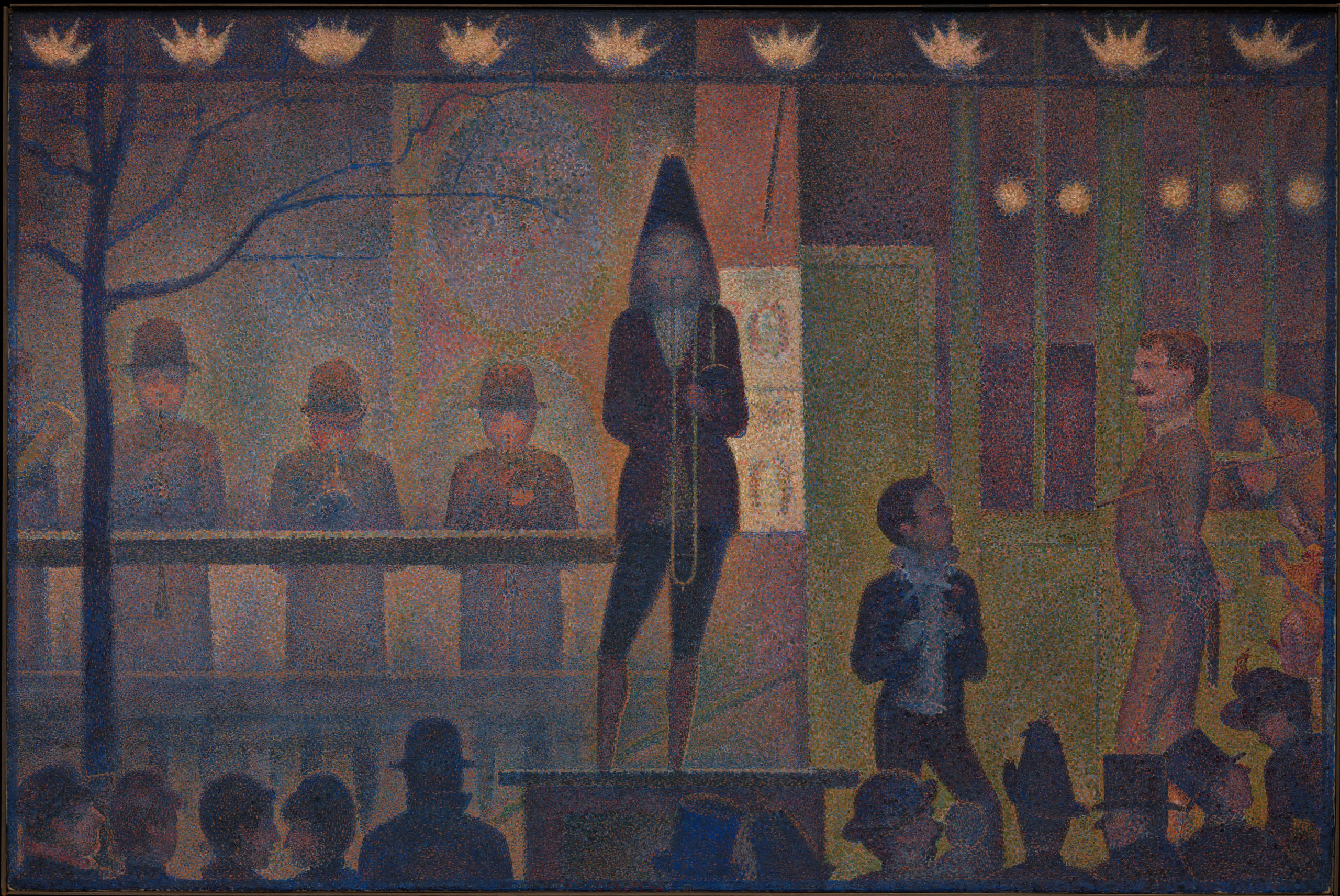
The Neo-Impressionists also attempted to systematize the emotional qualities conveyed by their paintings. Seurat defined three main expressive tools at the painter’s disposal: color (the hues of the spectrum, from warm to cool), tone (the value of those colors, from light to dark), and line (horizontal, vertical, ascending, or descending). Each has a specific emotional effect:
Gaiety of tone is given by the dominance of light; of color, by the dominance of warmth; of line, by lines above the horizontal. Calmness of tone is given by an equivalence of light and dark; of color by an equivalence of warm and cold; and of line, by horizontals. Sadness of tone is given by the dominance of dark; of color, by the dominance of cold colors; and of line, by downward directions.[4]
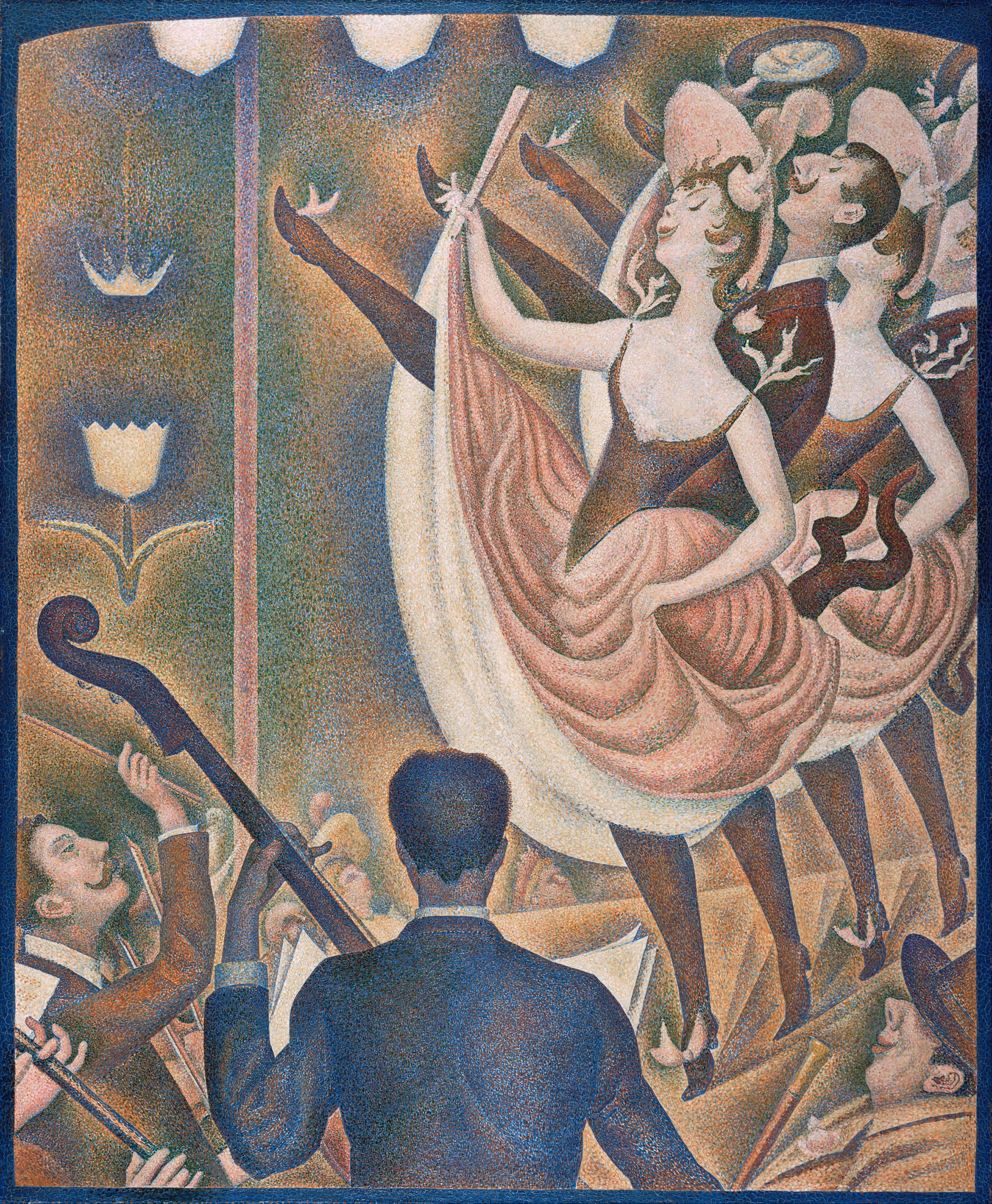
Seurat’s Chahut (Can-Can) seems designed to exemplify these rules, employing mostly warm, light colors and ascending lines to convey a mood of gaiety appropriate to the dance.
The Neo-Impressionist style had a relatively brief heyday; very few artists carried on the project into the 20th century. However, a great many artists experimented with it and took portions of its method into their own practice, from van Gogh to Henri Matisse. More broadly, the Neo-Impressionist desire to conform art-making to universal laws of perception, color, and expression echoes throughout Modernism, in movements as diverse as Symbolism, Purism, De Stijl, and the Bauhaus.
Excerpted from: Dr. Charles Cramer and Dr. Kim Grant, “Introduction to Neo-Impressionism, Part I,” in Smarthistory, April 15, 2020, https://smarthistory.org/introduction-to-neo-impressionism-part-i/.
All Smarthistory content is available for free at www.smarthistory.org
CC: BY-NC-SA
Audio recording of the chapter (part 2) here:
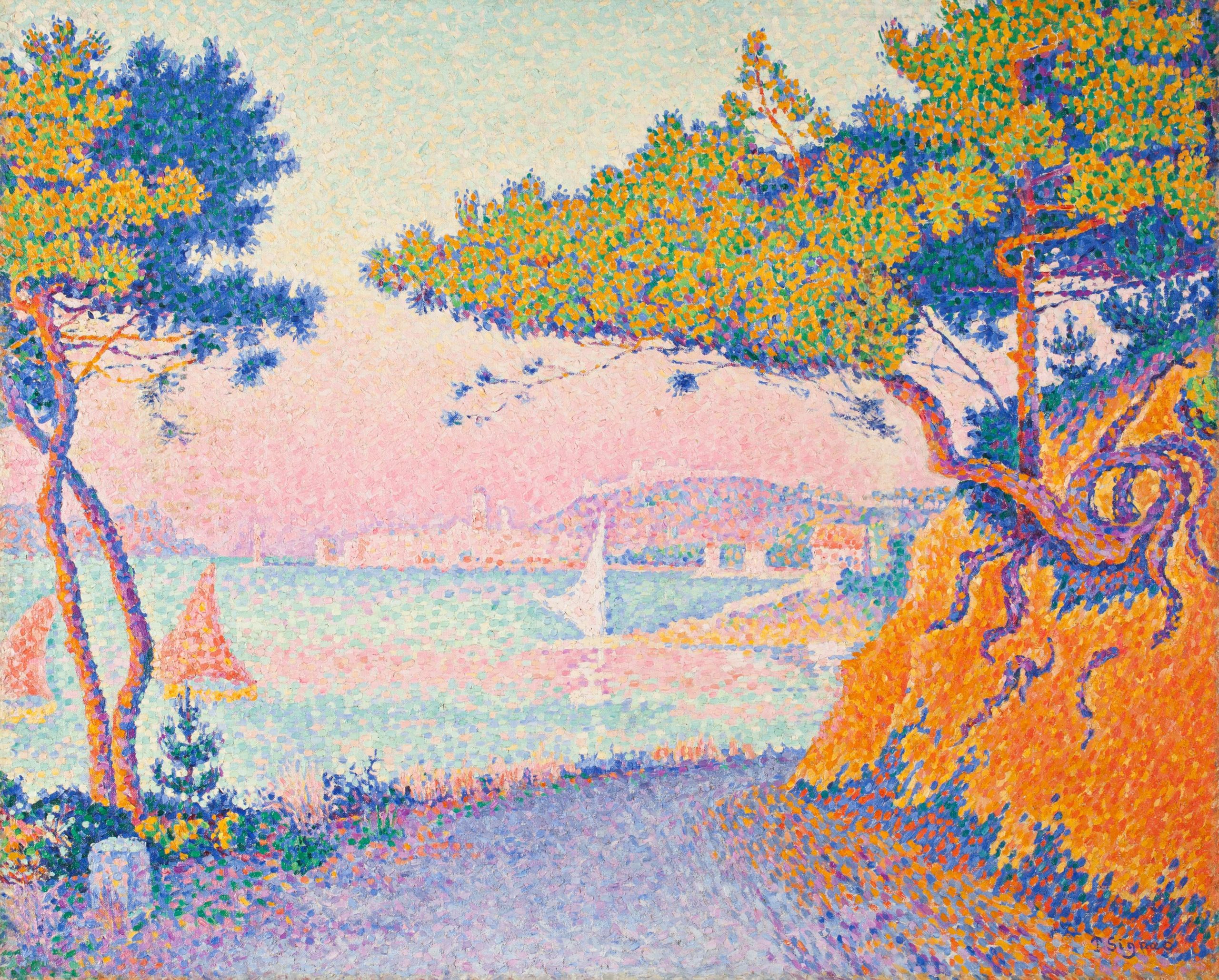
For the most part, the Neo-Impressionists continued to depict the kinds of subjects preferred by the Impressionists: landscapes and leisure scenes. In addition to his famous painting of people lounging in the park on the island of La Grande Jatte, many of Georges Seurat’s paintings portrayed entertainments such as the circuses and music halls that contributed to Paris’s reputation for mass spectacles in the late nineteenth century.
Paul Signac’s landscape paintings similarly reveal a concentration on leisure scenes. A sailor himself, Signac painted dozens of harbor scenes dominated by the sails and masts of small pleasure craft. The Mediterranean coast of France, where Signac spent his summers, had a reputation both for the quality of its light — a key interest of the Neo-Impressionists generally — and for a laid-back, sun-filled lifestyle. In Signac’s canvases, the bright colors favored by the Neo-Impressionists perfectly complement this reputation.
Although these subjects suggest carefree pleasure, there are undertones of social criticism in some Neo-Impressionist paintings. Seurat’s Circus shows the strict class distinctions in Paris both by location, with the wealthier patrons seated in the lower tiers, and by dress and posture, which gets markedly more casual the further the spectators are from ringside.
One contemporary critic also remarked that the rigidity of the poses in Seurat’s La Grande Jatte reminded him of “the stiffness of Parisian leisure, prim and exhausted, where even recreation is a matter of striking poses.”[5] As we examine the characters in La Grande Jatte in detail, there are some surprising inclusions and juxtapositions. In the left foreground, a working-class man in shirtsleeves overlaps a much more formally-dressed middle-class gentleman in a top hat holding a cane. A trumpet player in the middle-ground plays directly into the ears of two soldiers standing at attention in the background. A woman with an ostentatiously eccentric pet monkey on the right and another fishing on the left have been interpreted as prostitutes, one of whom is casting out lures for clients. Between them, a toy lap-dog with a pink ribbon leaps toward a rangy hound whose coat is as black as that of the bourgeois gentleman with the cane.
Despite these provocative juxtapositions and overlaps, very few of the figures actually seem to be interacting with each other; each is lost in their own world. Unlike the mood of convivial good-fellowship between the classes and sexes in Auguste Renoir’s Moulin de la Galette, Seurat’s Grande Jatte sets up a dynamic of alienation and tension.
La Grande Jatte forms an implicit pair with an earlier painting of the same size by Seurat, Bathers at Asnières. Asnières was an industrial suburb of Paris, just across the river Seine from La Grande Jatte. Unlike that island’s largely middle-class patrons in their top hats and bustle skirts, here we see more working-class and lower-middle-class figures in shirtsleeves and straw hats or bowlers. In the background the smokestacks of the factories at Clichy serve as a reminder of labor, even during the men’s leisure time.
As in the painting of La Grande Jatte, all of the figures are isolated in their own world, but a sense of implicit tension is raised by their insistent gaze across the river at their wealthier compatriots. A middle-class couple being rowed by a hired oarsman in a boat with a prominent French flag further adds to the class tensions raised by the work.
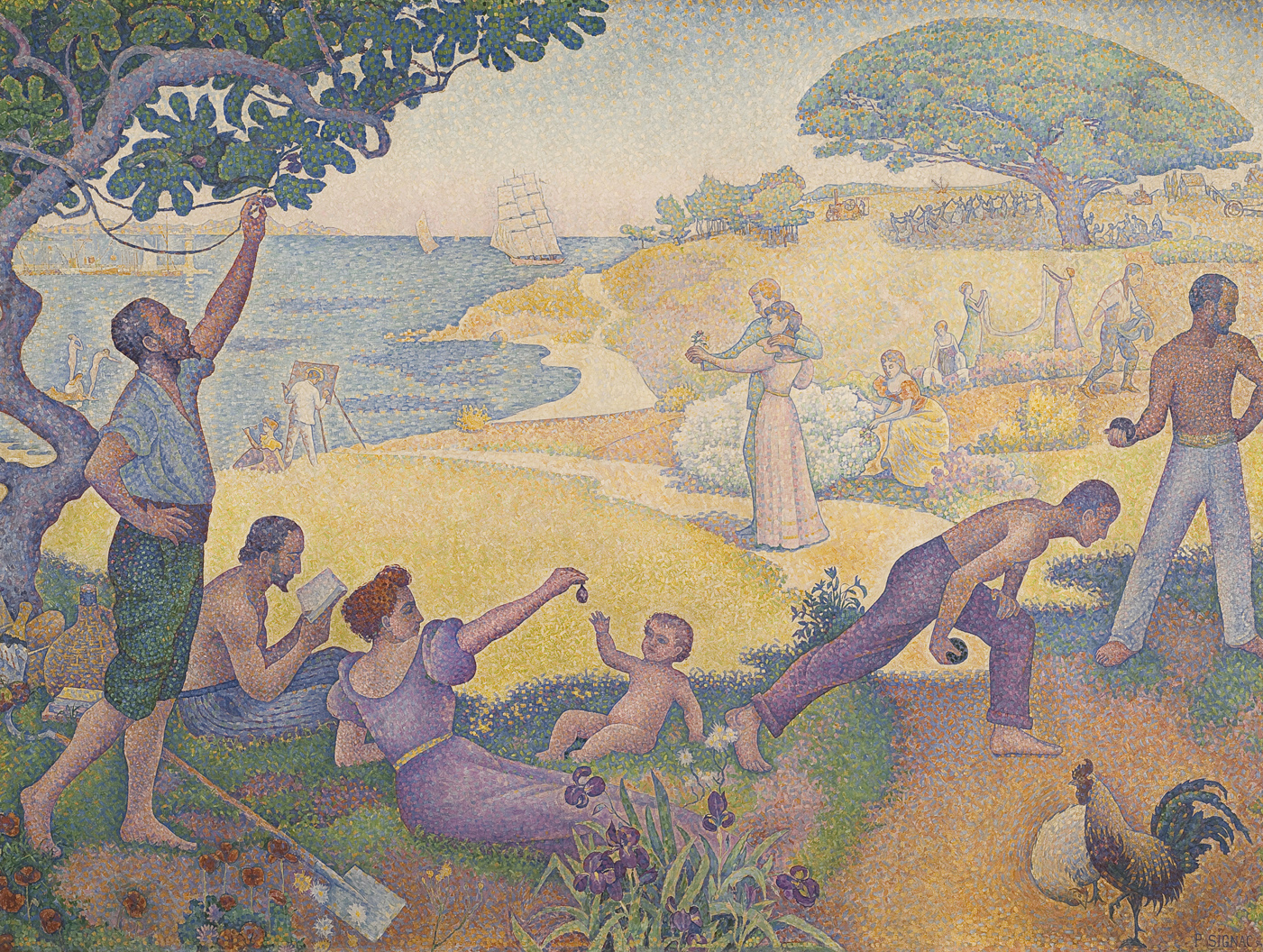
Perhaps it was this odd sense of unresolved class tensions that caused Signac to suggest that even Seurat’s paintings of “the pleasures of decadence” are about exposing “the degradation of our era” and bearing witness to “the great social struggle that is now taking place between workers and capital.”[6] Seurat’s own politics were unclear, but Signac was a social anarchist, as were several other Neo-Impressionists, including Camille Pissarro and his son Lucien, as well as Maximilian Luce, Theodore van Rysselberghe, Henri Cross, and the critic Felix Fénéon. Social anarchists reject a strong centralized government in which the state owns the means of production and guides the economy; they believe that social ownership and cooperation will emerge naturally in a stateless society.
Signac’s In the Time of Harmony was originally titled In the Time of Anarchy, but political controversy forced a change. Between 1892 and 1894 there were eleven bombings in France by anarchists, and a very public trial of suspected anarchists that included Fénéon and Luce.
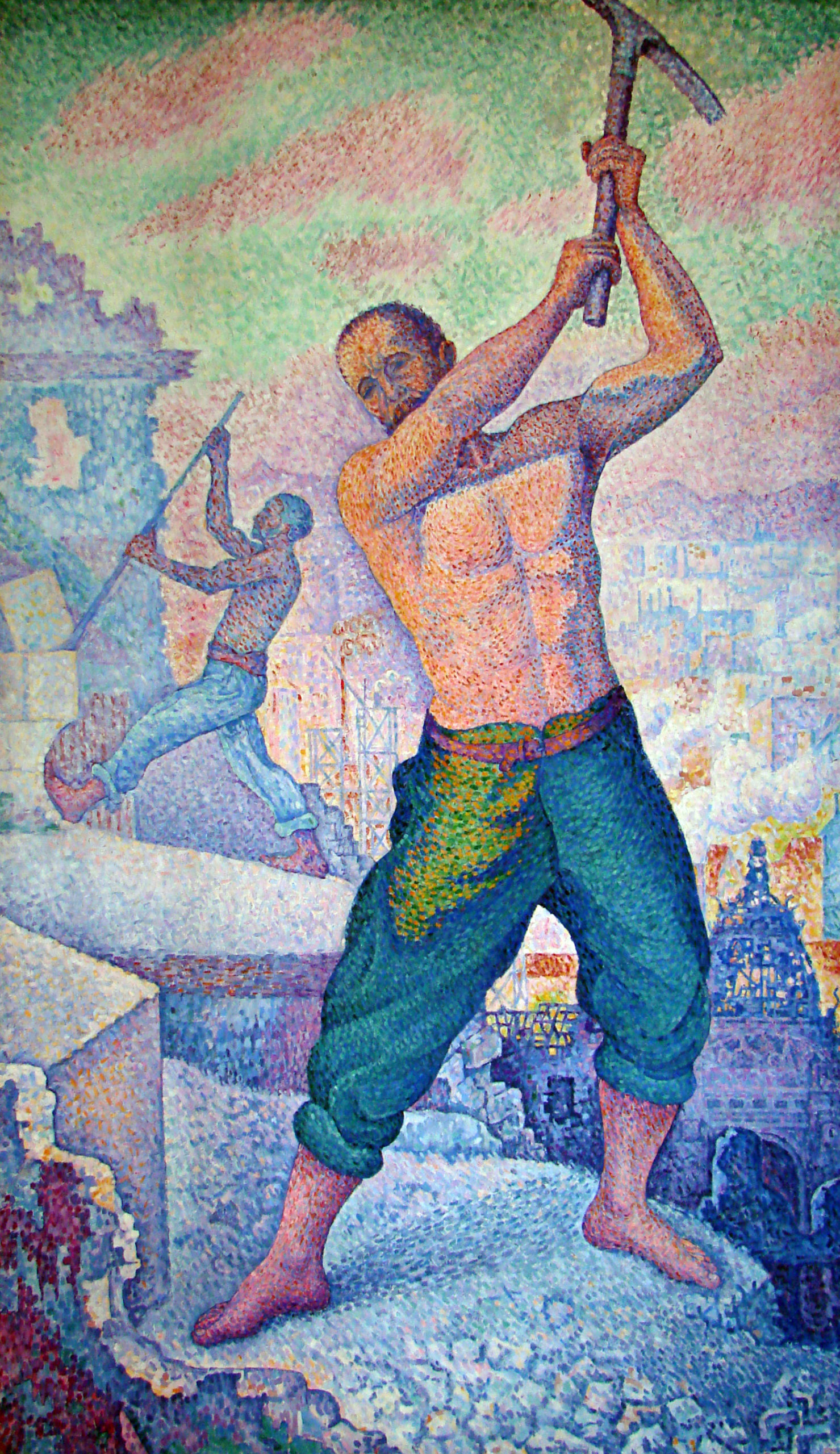
Signac’s painting was intended to show that, despite its current revolutionary tactics, the aim of anarchism was a peaceful utopia. In the foreground, workers lay down their tools for a picnic of figs and champagne while others play at boules. A couple in the center contemplates a posy, while behind them a man sows and women hang laundry. Although the mood is timeless — with different clothing, this painting could be a Classical pastoral scene — in the distance modern mechanical farm equipment reinforces the painting’s subtitle, “The Golden Age is Not in the Past, it is in the Future.”
Relatively few Neo-Impressionist paintings are so overtly allegorical and political. Signac argued that it was the Neo-Impressionists’ technique, not any directly socialist or anarchist subject matter, that was most in tune with the political revolutionaries. The Neo-Impressionists’ rigorous appeal to hard science, rather than dead conventions, along with their uncompromising will to “paint what they see, as they feel it,” will help “give a hard blow of the pick-axe to the old social structure” and promote a corresponding social revolution.[7]
Excerpted from: Dr. Charles Cramer and Dr. Kim Grant, “Introduction to Neo-Impressionism, Part II,” in Smarthistory, accessed November 13, 2020, https://smarthistory.org/introduction-to-neo-impressionism-part-ii/.
All Smarthistory content is available for free at www.smarthistory.org
CC: BY-NC-SA
- Félix Fénéon, “Les Impressionnistes en 1886,” as translated in Linda Nochlin, ed., Impressionism and Post-Impressionism, 1874-1904: Sources and Documents (Englewood Cliffs, N.J.: Prentice-Hall, 1966), p. 108. ↵
- Paul Signac, From Eugène Delacroix to Neo-Impressionism (1899), as translated in Nochlin, ed., p. 122. ↵
- Paul Signac, Delacroix to Neo-Impressionism, in Nochlin, ed., p. 121. ↵
- Georges Seurat, Letter to Maurice Beaubourg, August 28, 1890, in Nochlin, ed., p. 114 (translation modified for clarity). ↵
- Henri Fèvre, “L’Exposition des Impressionnistes,” in Étude sur le Salon de 1886 et sur l’exposition des impressionnistes (Paris, 1886), p. 43 (our translation). ↵
- Paul Signac, “Impressionists and Revolutionaries,” La Révolte, June 13-19, 1891, as translated in Nochlin, ed., p. 124. ↵
- Paul Signac, “Impressionists and Revolutionaries,” La Révolte, June 13-19, 1891, as translated in Nochlin, ed., p. 124. ↵

